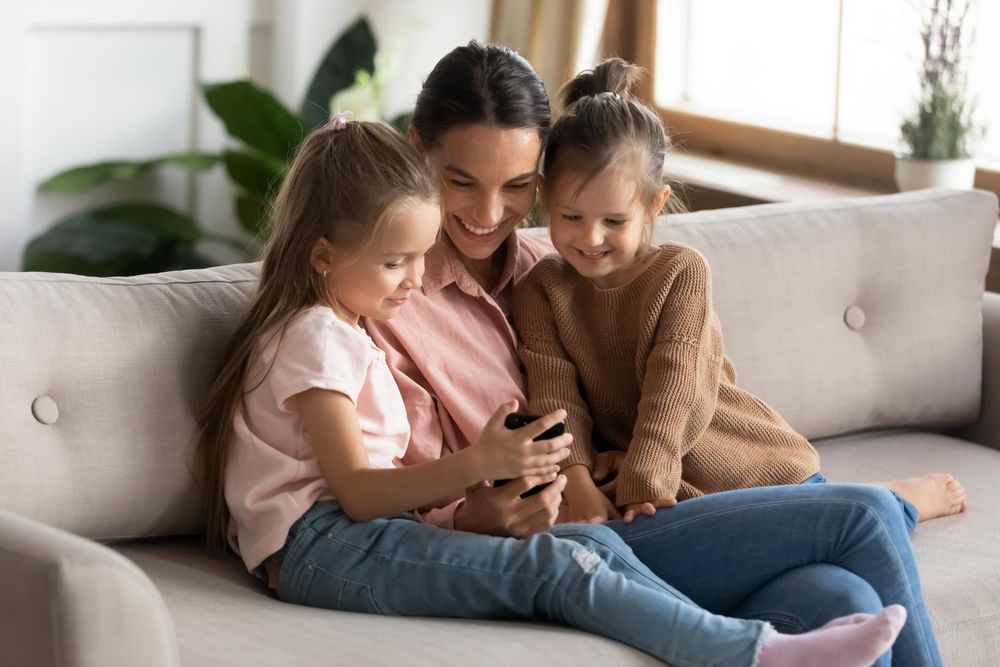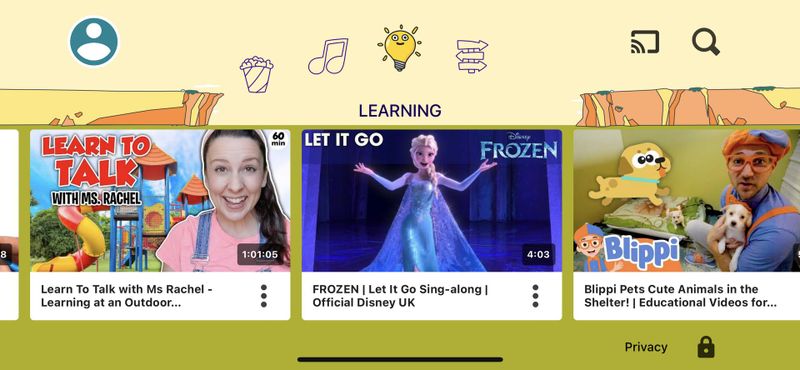APP REVIEW
Why Is YouTube Kids Safer Than YouTube?
Kids love YouTube. But it's very easy for them to stumble across disturbing videos. As a parent you may be worried about the safety and appropriateness of the app. That's why YouTube introduced YouTube Kids. The family-friendly version of the popular platform promises to be a safe and fun digital space for kids. But is it really? We’re taking a closer look at YouTube Kids to help you decide whether this app is right for your family.

What Is YouTube Kids?
YouTube Kids is a free app available on both iOS and Android, created by YouTube. You might be thinking, "Why do we need a separate app for kids? Can't they just watch regular YouTube?" Well, here's the scoop: not everything on YouTube is suitable for young eyes and ears. That's where YouTube Kids comes in. Designed for kids aged 12 and under, the app offers a simplified user interface, age-appropriate content, and parental control features that make it a more secure and kid-friendly alternative to the main YouTube platform.
What Content Is on YouTube Kids?
YouTube Kids is like a treasure trove of content to engage, entertain, and educate kids of different age groups. The platform strives to provide a comprehensive selection of videos that cater to a variety of interests, ensuring there's something for everyone.
The platform offers a wealth of educational videos that cover subjects like science, mathematics, history, language arts, and more. These videos use creative and interactive approaches to teach concepts, making learning fun and enjoyable for kids. YouTube Kids is also home to all the popular animated shows and characters your kid knows and loves. Kids can watch episodes of their favorite shows like Paw Patrol, Peppa Pig and Pokémon or discover new ones, all within a safe environment. Other categories include Music, Gaming (only for older kids), Animals and Explore.
You should know that the app allows content creators to submit their videos to be considered for inclusion on the platform. However, not all submitted videos make it to the app – YouTube uses a mix of automated systems, human reviewers, and user feedback to ensure that only age-appropriate content is on YouTube Kids.

(Source: YouTube Kids)
Parental Control Features on YouTube Kids
One of the key aspects that sets YouTube Kids apart from the main YouTube platform is the variety of parental control features it offers. These controls allow you to customize your kid's experience and create a safer environment for them to explore. Some of the most notable parental control features include:
Age-based content filtering: YouTube Kids offers three different age groups for content filtering: Preschool (ages 4 and under), Younger (ages 5-8), and Older (ages 9-12). You can select the appropriate level for your kid to ensure they are only exposed to content suitable for their age group.

(Source: YouTube Kids)
Search control: You have the option to enable or disable the search feature within the app. Disabling search will restrict your kid's access to only the content available on the home screen and within the channels they are subscribed to.
Video blocking and reporting: If you come across a video that you find inappropriate for your kid, you can block it from appearing on the app. Additionally, you can report the video to YouTube for further review.
Custom content passcode: To prevent your kid from changing the parental control settings, you can set a custom passcode that will be required to access the app's settings.
Should You Have Any Concerns About YouTube Kids?
While YouTube Kids is a fantastic platform for kids, it's not without its share of criticism. Here are some concerns that you should be aware of:
Inappropriate content: Despite YouTube's efforts to filter content, there have been instances where inappropriate videos have slipped through the cracks. Although YouTube constantly works to improve its filtering algorithms, make sure to stay vigilant and monitor what your kid is watching. Use the video blocking and reporting features to help keep YouTube Kids a safe space for your kid.
Exposure to ads: YouTube Kids does display ads and promotional content. While YouTube claims to have strict guidelines that prohibit the promotion of unhealthy food, beverages, or potentially harmful products, it's important for parents to be aware that their kids may be exposed to advertising. You may want to use this as an opportunity to teach your kid about advertising and how to critically evaluate the content they see.
Consumerism: Some parents worry that YouTube Kids may promote consumerism and materialism, especially when it comes to toy unboxing and product review videos (Is your kid also so obsessed with those?). To counter this, you can use the parental controls to limit exposure to such content and encourage your kid to watch more educational and creative videos.
Privacy: As with any online platform, privacy can be a concern for parents. YouTube Kids collects data on user behavior, which is used to improve the app and provide personalized content recommendations. While the app does not collect personally identifiable information, some parents may still be uncomfortable with the idea of their kid's data being collected. Be sure to review YouTube Kids' privacy policy to understand how your kid's data is being used and talk to your kid about the importance of online privacy.
Too much screen time: While YouTube Kids offers a wealth of educational and entertaining content, too much screen time can have negative effects on kids's physical and emotional well-being. Screen time should not replace other essential developmental activities such as physical play, social interaction, and hands-on learning. So make sure you strike a healthy balance between online and offline activities for your kid.
Tips for Parents
Set up profiles and content filters: Take the time to create an individual profile for your kid and choose the appropriate content filter for their age group. This will ensure that they have a tailored viewing experience and are only exposed to age-appropriate content.
Monitor and adjust: Regularly review your kid's viewing history and make adjustments to their content filters and blocked channels as needed. Stay engaged in your kid's online experience by discussing their favorite videos and channels, and don't hesitate to block content you deem unsuitable.
Set time limits: You can set daily time limits on the app, which will automatically pause video playback once the time limit has been reached. This can help you manage your kid's screen time and promote a healthy balance between online and offline activities.
Explore together: Spend time with your kid exploring the app and discovering new content together. This not only helps you stay informed about what your kid is watching but also provides an opportunity for bonding and shared interests.
Use it as a learning tool: Encourage your kid to explore educational content on YouTube Kids to supplement their learning outside of school. With topics ranging from science and history to arts and crafts, there's something for every kid's interests and abilities.
Encourage creativity: Many YouTube Kids channels feature content that encourages creativity, such as arts and crafts tutorials, music lessons, and DIY projects. Encourage your kid to engage with these videos and try out new activities, helping them develop valuable skills and interests.
Provide feedback: As a parent, your input is essential for improving the YouTube Kids platform. If you encounter any inappropriate content or have suggestions for improvements, don't hesitate to provide feedback within the app. This will help YouTube Kids continue to evolve and offer a safer, more engaging experience for your kid.
So What's the Conclusion?
Overall, we think YouTube Kids provides a safe and age-appropriate environment for kids to explore and learn from online video content. Combined with Ohana, you have great tools to ensure your kid has a positive online experience while establishing a healthy screen time routine.
Disclaimer: The brand names and images used in this post, including screenshots from mobile games and promotional materials, are intended for informational and illustrative purposes only. All copyrights, trademarks, and other intellectual property rights for these images are the sole property of their respective owners. We do not claim any ownership over these images, nor does our use of them imply any form of endorsement or sponsorship by the respective game developers or publishers. If you are the copyright owner of any of the brand names and images used and would like them to be removed, please contact us and we will do so immediately.